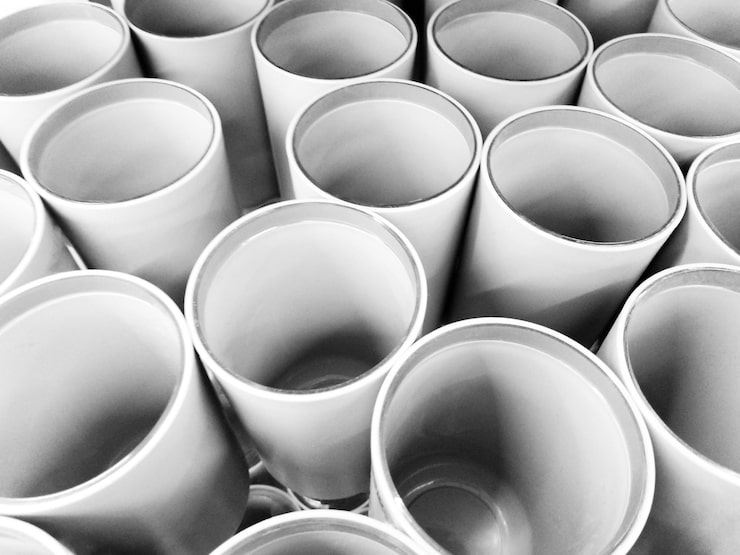When exploring modern manufacturing techniques for plastic and metal piping, many professionals want to know what is a pipe extrusion and how it works. Pipe extrusion is a continuous manufacturing process used to produce long, uniform pipes with consistent cross-sectional shapes. This method is widely used in industries such as construction, water supply, oil and gas, electrical conduit production, and industrial fluid handling. The process relies on specialized machinery to melt raw material, shape it through a die, and cool it into a finished product with precise dimensions and performance characteristics.
The pipe extrusion process begins with feeding raw material, typically in the form of plastic pellets, granules, or powder, into a hopper. Common materials include PVC, HDPE, PP, PEX, and other thermoplastics, though metals can also be extruded using specialized setups. The raw material is transported into a heated barrel where a rotating screw conveys, compresses, and melts it through the application of both heat and mechanical shear. This molten material is then pushed through a pipe extrusion die, which determines the outer diameter and wall thickness of the pipe.

The extrusion die is a critical component because it controls the shape and quality of the finished pipe. In pipe extrusion, the die has a mandrel in the center to form the hollow interior. The gap between the die wall and the mandrel defines the pipe’s wall thickness. Achieving uniform melt flow and pressure distribution in the die is essential to ensure consistent product quality and avoid defects such as uneven thickness, surface roughness, or dimensional instability.
Once the molten material exits the die, it immediately enters the cooling and sizing stage. This usually involves a vacuum calibration tank where the hot pipe is drawn through sizing sleeves while being cooled with water sprays or baths. The vacuum ensures that the pipe maintains its precise diameter and roundness as it solidifies. Cooling speed, water temperature, and vacuum pressure must be carefully controlled to prevent warping, shrinkage, or surface imperfections.
Following the cooling stage, the pipe passes through a haul-off unit, which uses caterpillar tracks or belts to pull the pipe at a steady rate through the entire extrusion line. The speed of the haul-off is synchronized with the extrusion output to maintain consistent wall thickness and diameter. Downstream from the haul-off, a cutting unit slices the pipe into specified lengths, and an automatic stacking system may be used for efficient packaging.
The advantages of pipe extrusion are numerous. It allows for continuous, high-volume production with minimal waste. The process can be easily adapted to produce pipes of different diameters, wall thicknesses, and material compositions. Additionally, additives such as UV stabilizers, colorants, and impact modifiers can be incorporated into the raw material before extrusion to enhance performance for specific applications. For example, pipes intended for outdoor use may require UV protection, while those used in chemical processing need increased chemical resistance.
In terms of quality control, pipe extrusion facilities often use inline measurement systems to monitor pipe dimensions, wall thickness, and surface finish during production. Non-destructive testing methods, such as ultrasonic wall thickness gauges, can detect inconsistencies in real time, allowing for immediate adjustments. This ensures that every length of pipe meets required standards before it leaves the production line.
The applications for extruded pipes are vast. In the construction sector, PVC and HDPE pipes are used for plumbing, drainage, and water supply systems. In telecommunications, small-diameter conduits protect fiber optic and electrical cables. In the energy sector, large-diameter HDPE pipes are employed for transporting oil, gas, and industrial slurries. The process also supports multi-layer extrusion, where multiple materials are co-extruded to create pipes with unique performance properties, such as improved barrier resistance or enhanced mechanical strength.
From an economic perspective, pipe extrusion is cost-effective because it minimizes material waste and supports automation. Regrind material from production scrap can often be recycled back into the process, further reducing costs. The high production speed and ability to run continuously for long periods also make it ideal for meeting large-scale demand.
Environmental considerations are increasingly important in modern pipe extrusion. Many manufacturers are optimizing their processes to reduce energy consumption, incorporate recycled materials, and comply with environmental regulations. For example, advanced extrusion lines may include energy-efficient barrel heating systems, closed-loop water cooling, and waste recovery systems. This not only lowers operational costs but also improves sustainability credentials, which is important for companies competing in environmentally conscious markets.
Technological innovations are also shaping the future of pipe extrusion. Developments in die design, material science, and process automation are enabling the production of pipes with tighter tolerances, higher performance, and specialized features such as embedded sensors or multilayer composite structures. Computer-controlled extrusion systems can adjust parameters like temperature, screw speed, and haul-off rate in real time based on feedback from inline sensors, ensuring optimal product quality without manual intervention.
For industries where product reliability is critical—such as potable water supply, gas distribution, and industrial processing—pipe extrusion offers the combination of precision manufacturing, high output, and consistent quality that few other methods can match. By understanding the process in depth, manufacturers can optimize their operations, engineers can specify the right materials, and end-users can have confidence in the performance of the final product.


